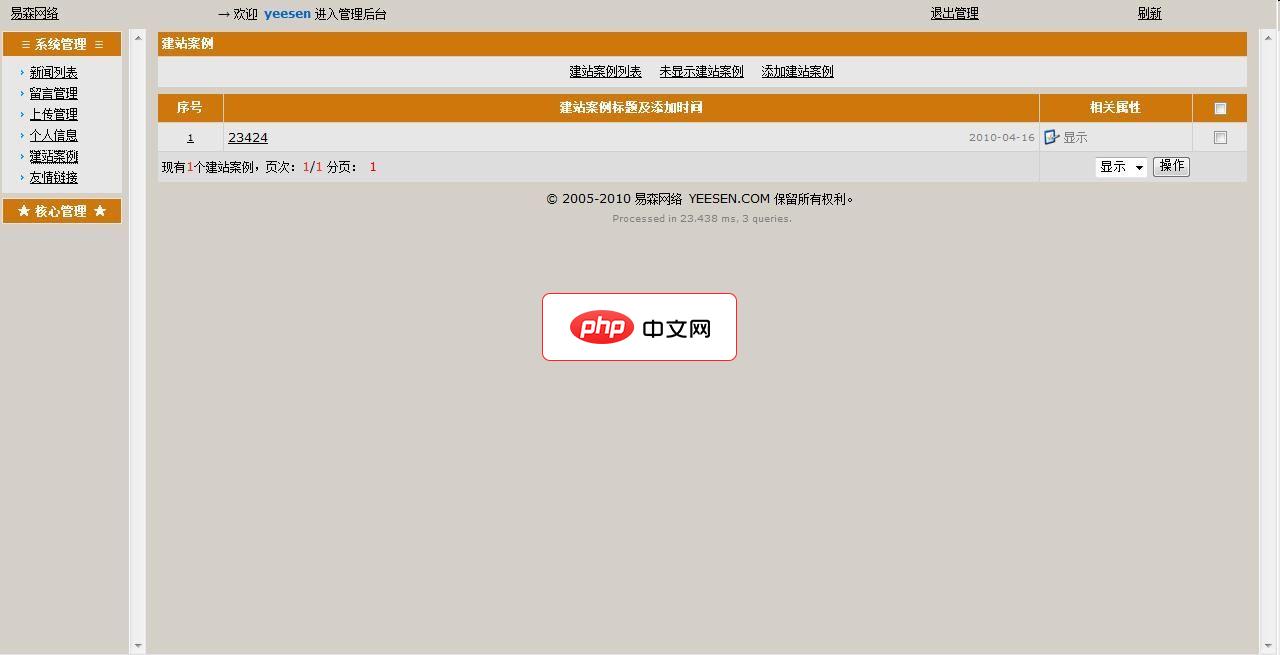Collections.max和min用于查找集合最值,需元素实现Comparable或传入Comparator;示例包括Integer、String及自定义对象Person按年龄比较,使用时注意集合非空非null,否则抛异常。

在Java中,Collections.max 和 Collections.min 是用于查找集合中最大值和最小值的便捷方法。它们属于 java.util.Collections 类,适用于实现了 Collection 接口的类(如 List、Set 等)。使用这两个方法的前提是集合中的元素必须是可比较的。
如果集合中的元素类型已经实现了 Comparable 接口(如 Integer、String、Date 等),可以直接调用 Collections.max 和 Collections.min。
示例代码:
import java.util.*;
List<Integer> numbers = Arrays.asList(3, 1, 4, 1, 5, 9, 2);
System.out.println("最大值: " + Collections.max(numbers)); // 输出 9
System.out.println("最小值: " + Collections.min(numbers)); // 输出 1
List<String> words = Arrays.asList("apple", "banana", "cherry");
System.out.println("最大值: " + Collections.max(words)); // 按字典序输出 cherry
System.out.println("最小值: " + Collections.min(words)); // 输出 apple
当需要自定义排序规则时,可以传入一个 Comparator 作为第二个参数。
立即学习“Java免费学习笔记(深入)”;

如果您是新用户,请直接将本程序的所有文件上传在任一文件夹下,Rewrite 目录下放置了伪静态规则和筛选器,可将规则添加进IIS,即可正常使用,不用进行任何设置;(可修改图片等)默认的管理员用户名、密码和验证码都是:yeesen系统默认关闭,请上传后登陆后台点击“核心管理”里操作如下:进入“配置管理”中的&ld
 0
0

示例:按字符串长度找最长和最短的字符串
List<String> words = Arrays.asList("hi", "hello", "hey", "greetings");
String longest = Collections.max(words, Comparator.comparing(String::length));
String shortest = Collections.min(words, Comparator.comparing(String::length));
System.out.println("最长: " + longest); // 输出 greetings
System.out.println("最短: " + shortest); // 输出 hi
使用这些方法时需要注意以下几点:
自定义对象示例:
class Person {
String name;
int age;
Person(String name, int age) {
this.name = name;
this.age = age;
}
}
List<Person> people = Arrays.asList(
new Person("Alice", 30),
new Person("Bob", 25),
new Person("Charlie", 35)
);
// 找年龄最大的人
Person oldest = Collections.max(people, Comparator.comparing(p -> p.age));
// 找年龄最小的人
Person youngest = Collections.min(people, Comparator.comparing(p -> p.age));
以上就是在Java中如何使用Collections.max和min的详细内容,更多请关注php中文网其它相关文章!

每个人都需要一台速度更快、更稳定的 PC。随着时间的推移,垃圾文件、旧注册表数据和不必要的后台进程会占用资源并降低性能。幸运的是,许多工具可以让 Windows 保持平稳运行。

Copyright 2014-2025 https://www.php.cn/ All Rights Reserved | php.cn | 湘ICP备2023035733号